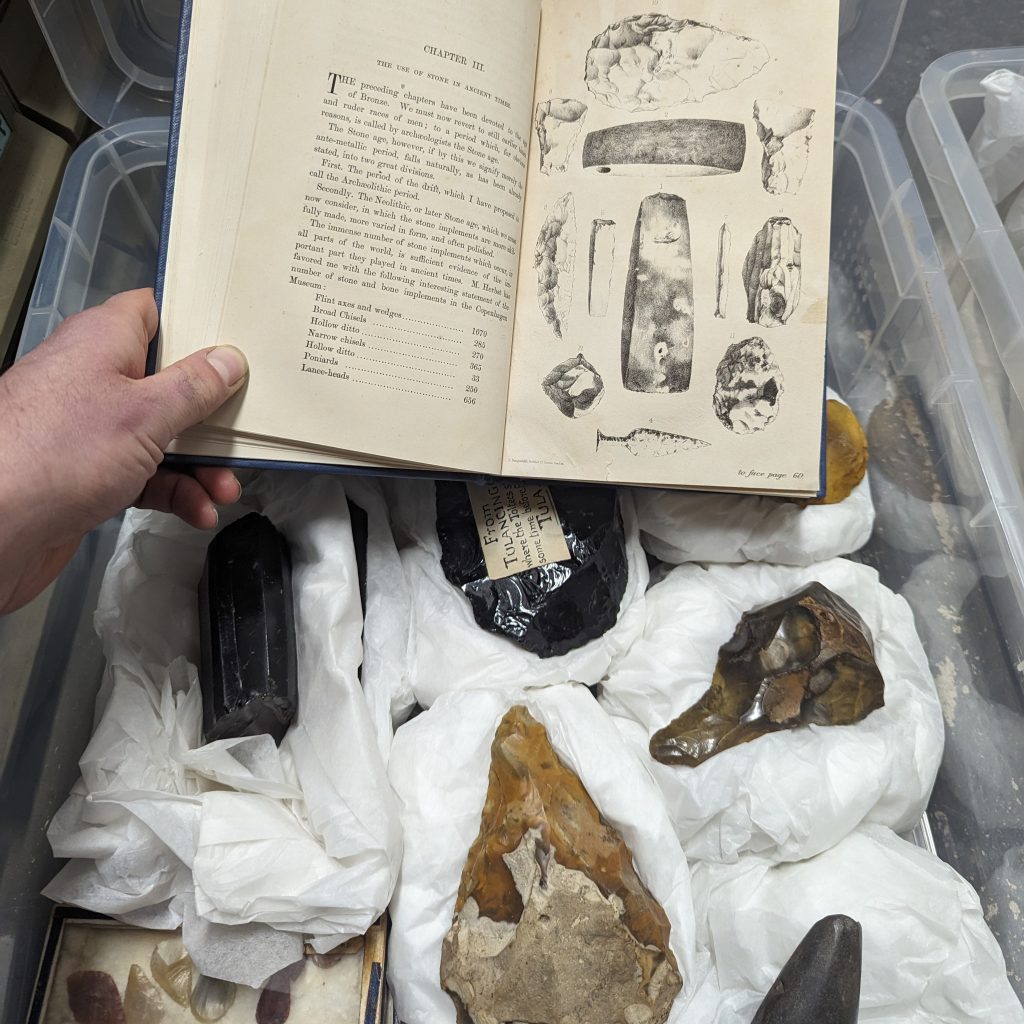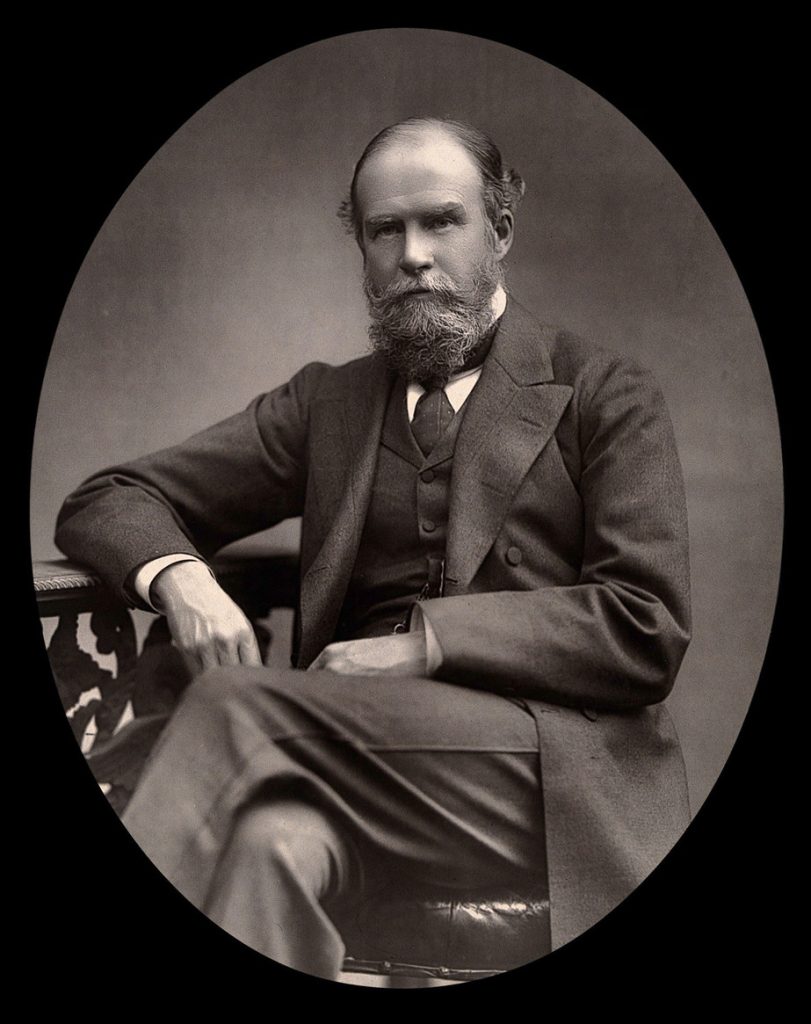Our library includes the volume ‘Pre-historic Times – as illustrated by Ancient Remains and the Manners and Customs of Modern Savages’ by John Lubbock
John Lubbock was many things – banker, politician, naturalist and archaeologist – but the greatest impact he had was as the author of the hugely significant work ‘Pre-Historic Times’. Published in 1865, it became the standard text book of prehistoric archaeology for the next 50 years. Lubbock was deeply influenced by Darwin’s publication of the theory of natural selection in 1859. As a ‘curious young lad with a love of insects’, coincidentally living next to the Darwins at Down House, he had been mentored by the older man from an early age.
What was his unique contribution? In this book he suggested that prehistory could be divided into three great epochs – Stone, Bronze and Iron – a radically new concept at the time and extremely controversial. Darwin’s theory of natural selection required a long earth history which was incompatible with the established belief, based on biblical timelines, that the earth was no older than precisely 6004 years, calculated by Archbishop Ussher in the 17th century.
This is how Lubbock defined these epochs in 1865:
Paleolithic:
‘When man shared the possession of Europe with the Mammoth, the Cave bear, the Wooly-haired rhinoceros, and other extinct animals.’
Neolithic:
‘The later or polished Stone age; a period characterized by beautiful weapons and instruments made of flint and other kinds of stone.’
Bronze Age:
‘In which bronze was used for arms and cutting instruments of all kinds.’
Iron Age:
‘In which that metal had superseded bronze for arms, axes, knives, etc. Stone weapons, however, of many kinds were still in use during the age of Bronze, and even during that of Iron. So that the mere presence of a few stone implements is not in itself sufficient evidence, that any given find belongs to the Stone age.’
Lubbock studied the tools of Palaeolithic cultures to understand what life might have been like in the Stone Age, and particularly how this compared to the lives of groups of non-western peoples living in modern times and sharing some of the same practices. He observed that the pressure-flaking technique used to make Inuit stone tools in the Arctic resembled those seen in the stone tools from Palaeolithic caves in France, despite the huge difference in timescale. He illustrated his ideas on human evolution by studying a bone harpoon from Tierra del Fuego that Darwin gave him, and connected his observations to the new Darwinian ideas of natural selection and progress.
Lubbock is also recognised for his purchase of land at Avebury in the 1870s to prevent development on part of the stone circle, and he became an influential politician in the fight to afford legal protection to ancient sites.


